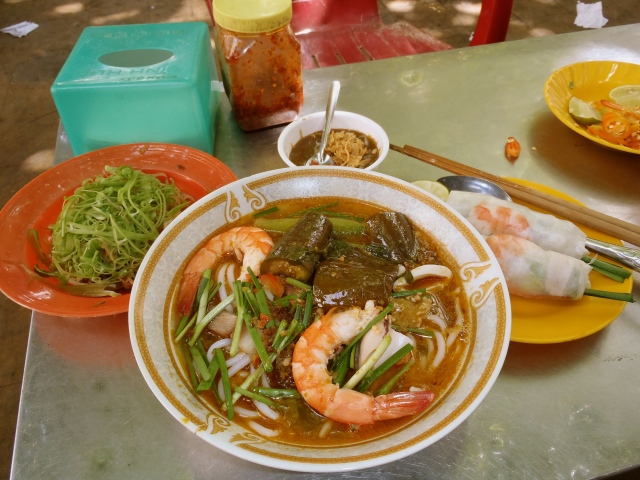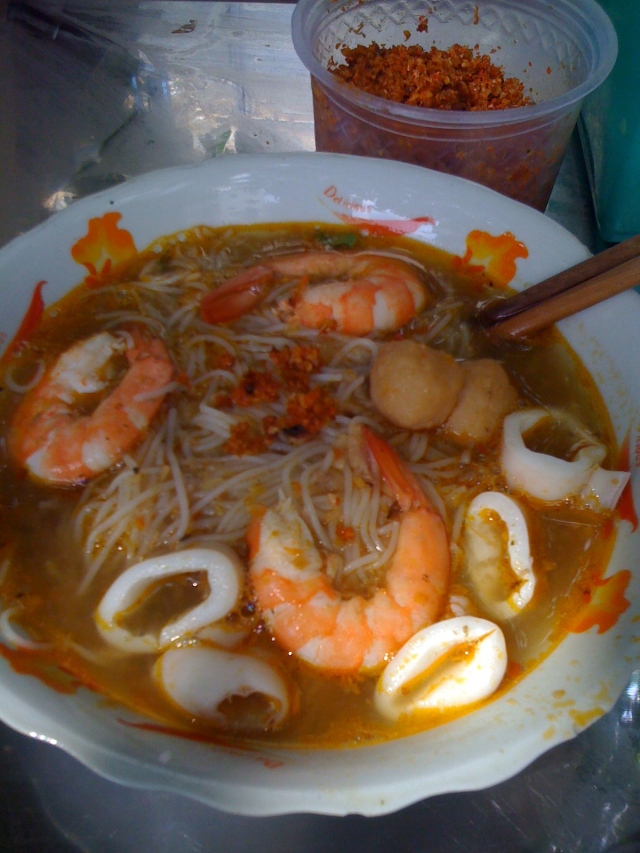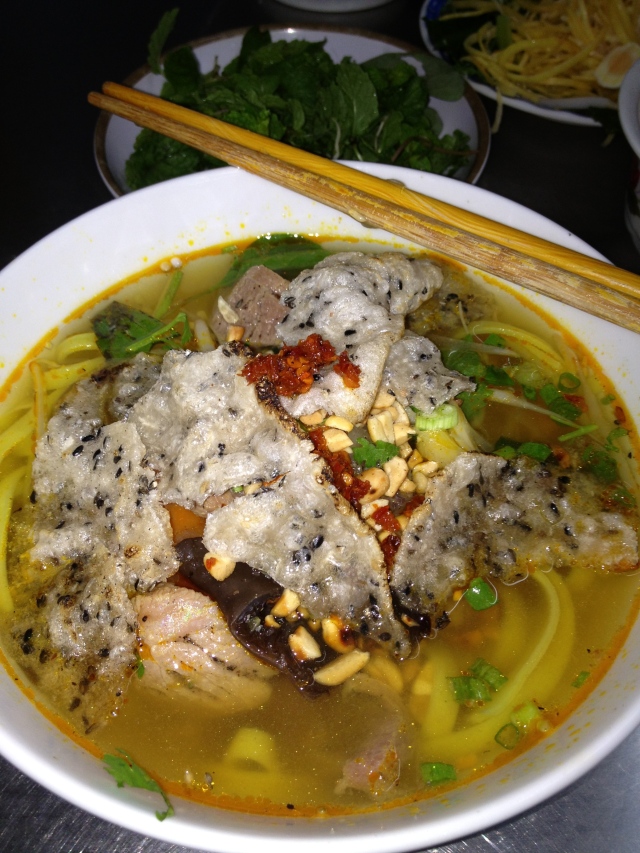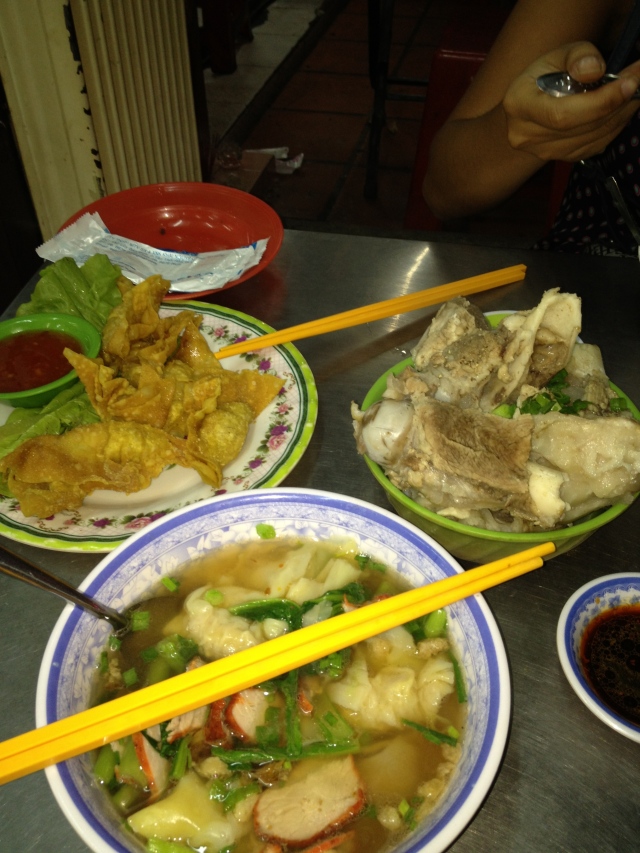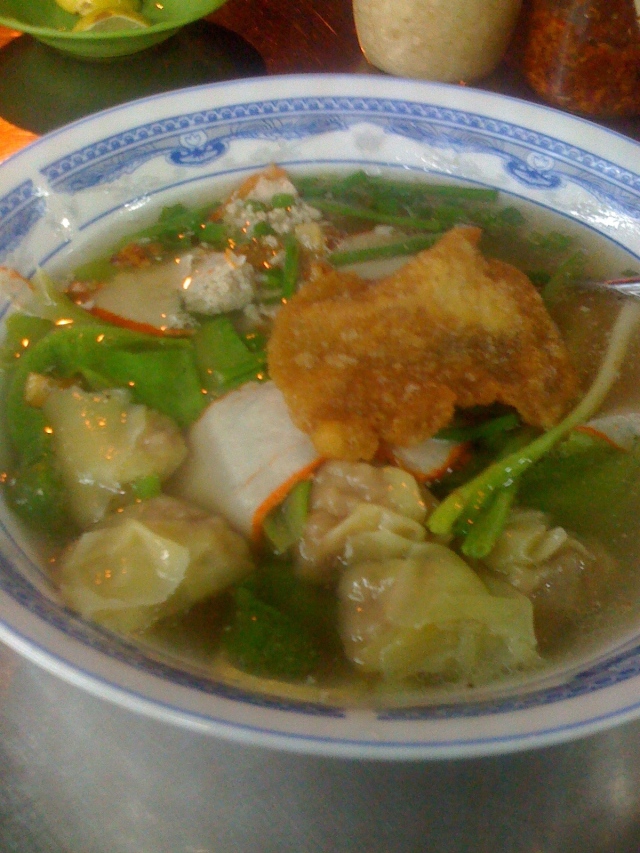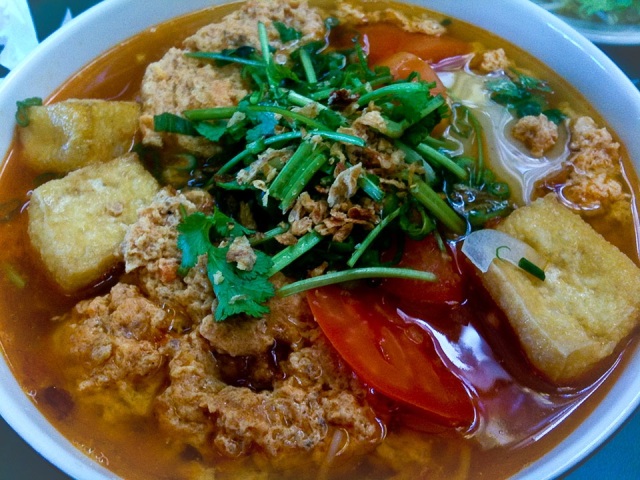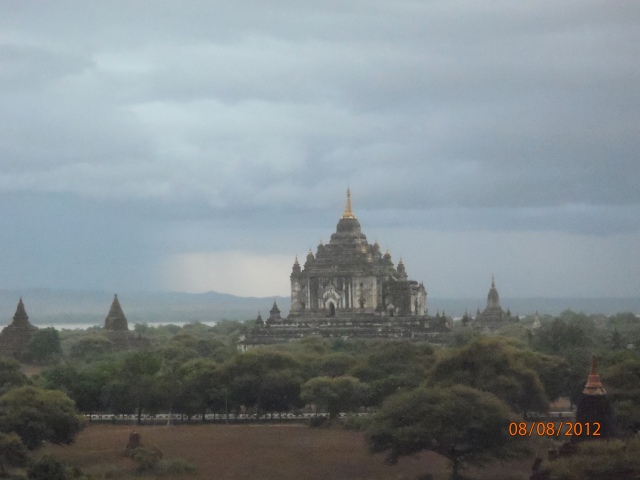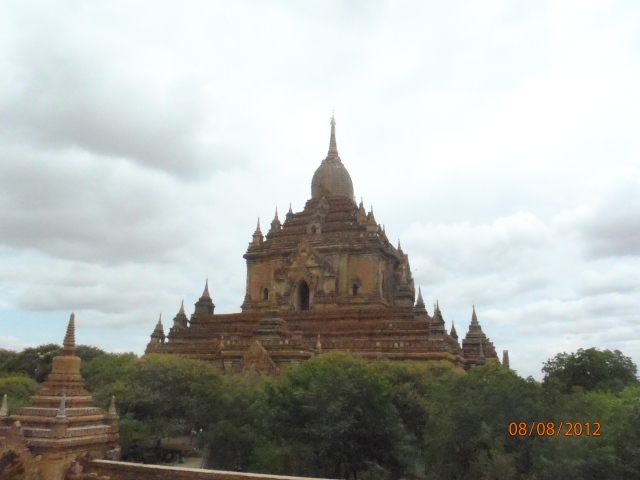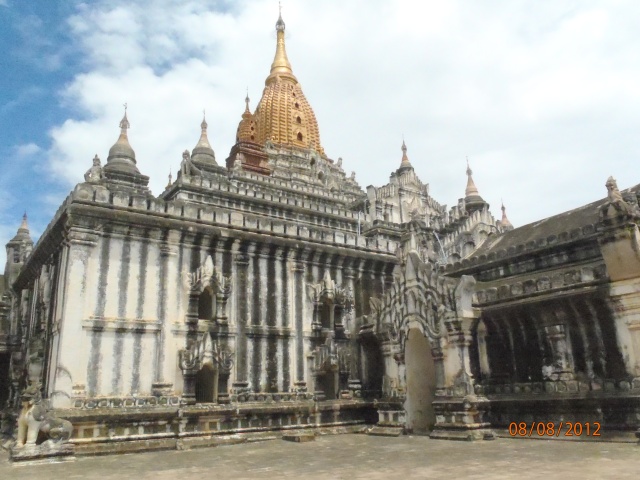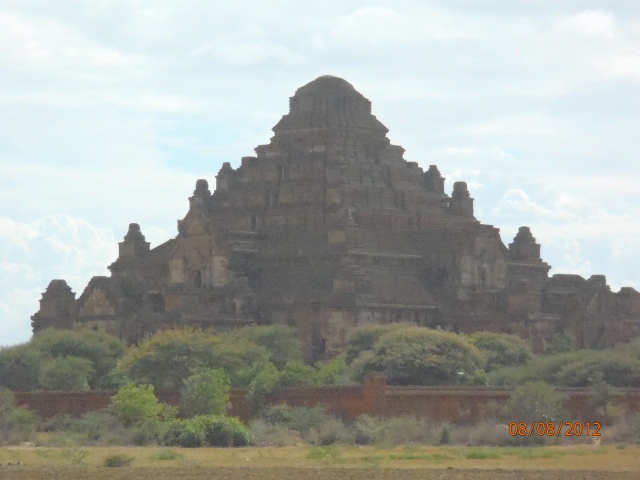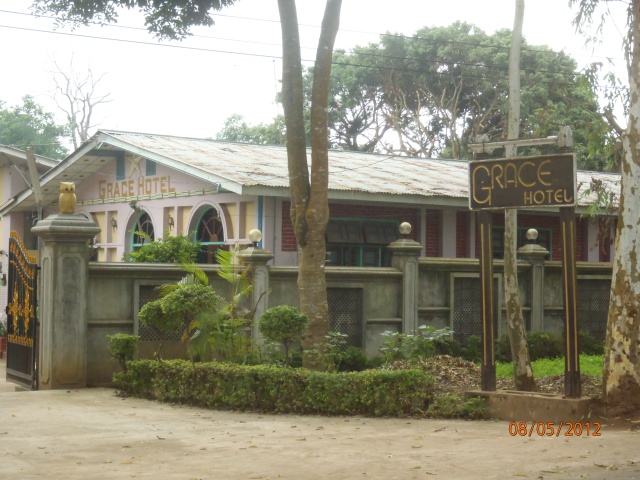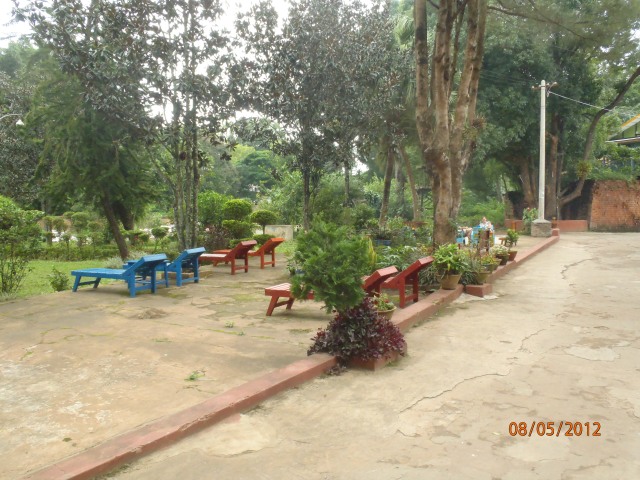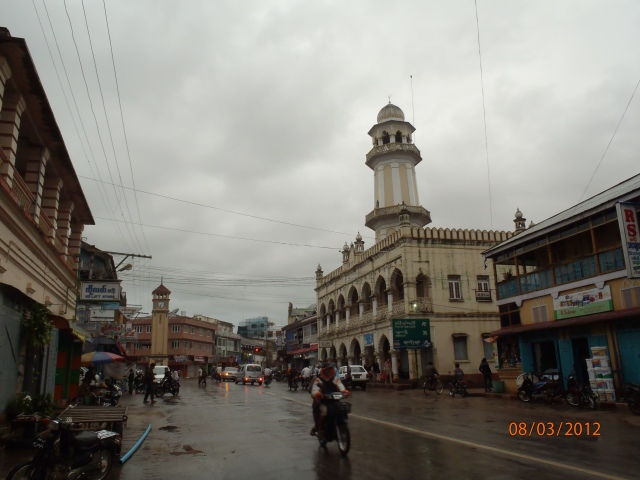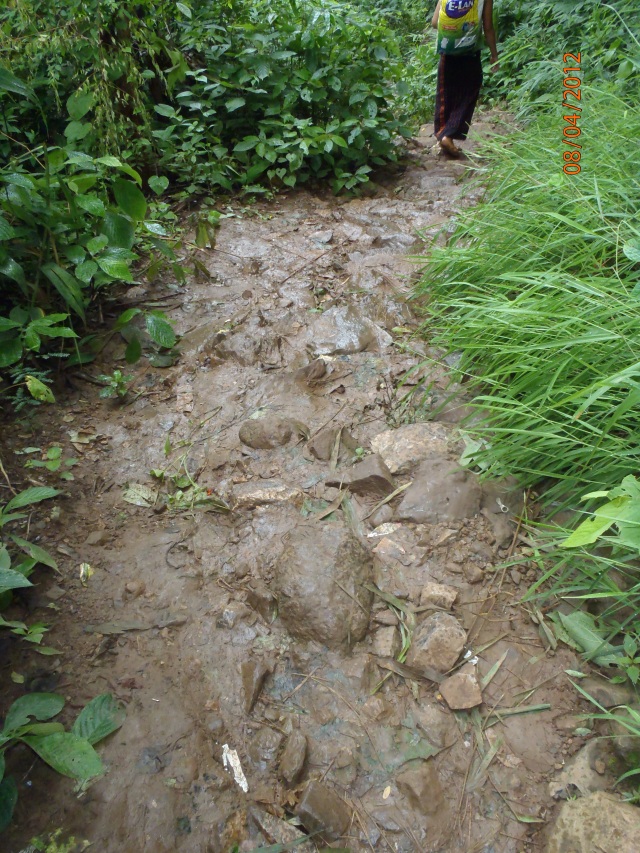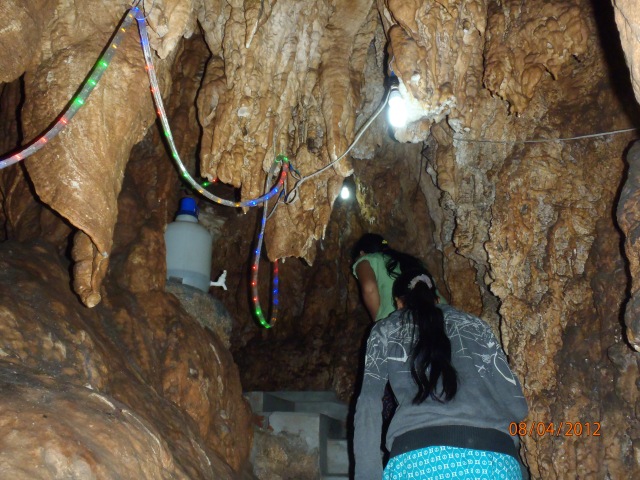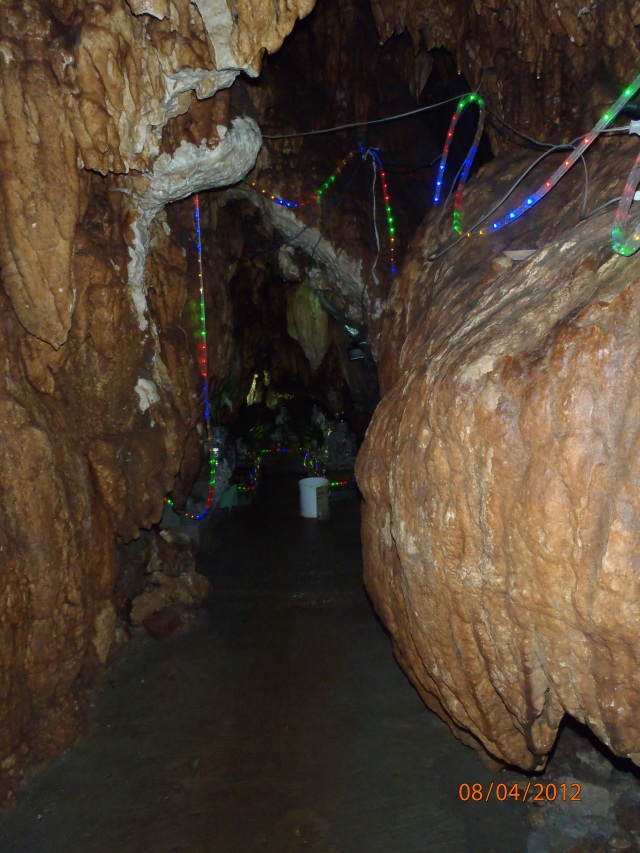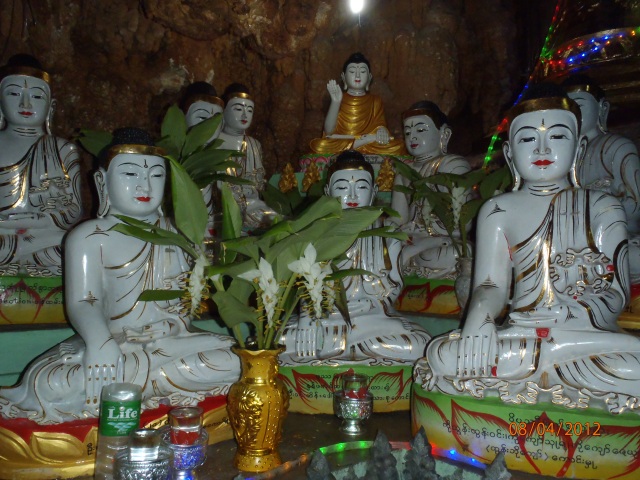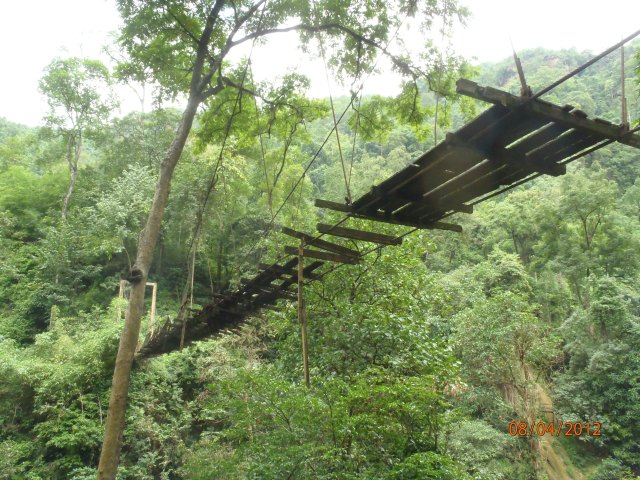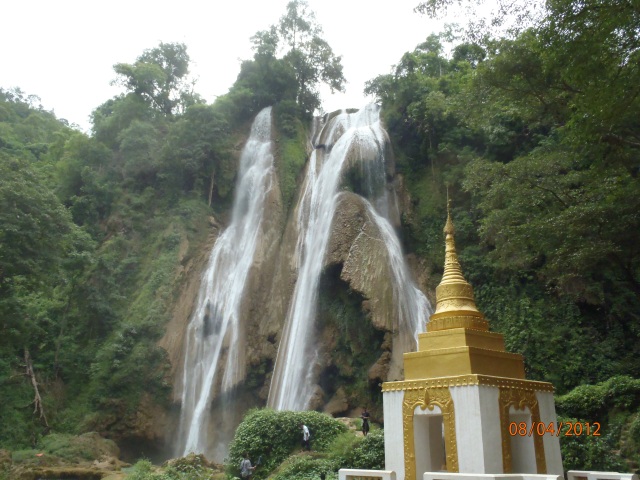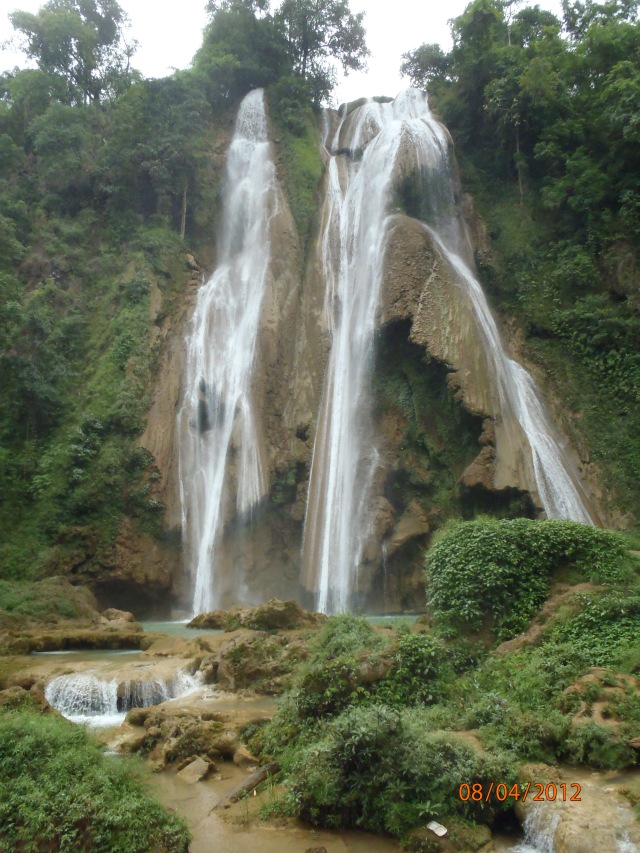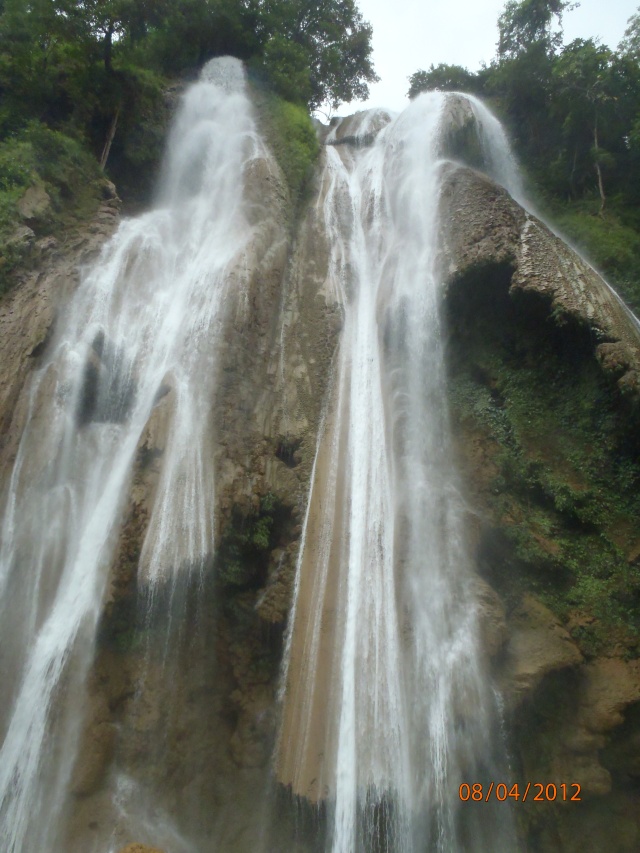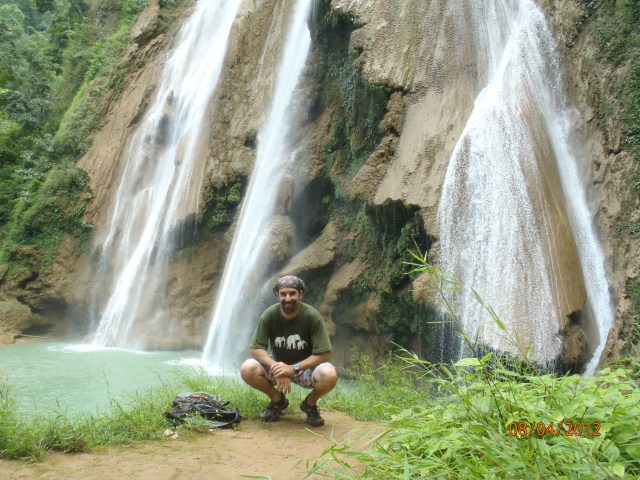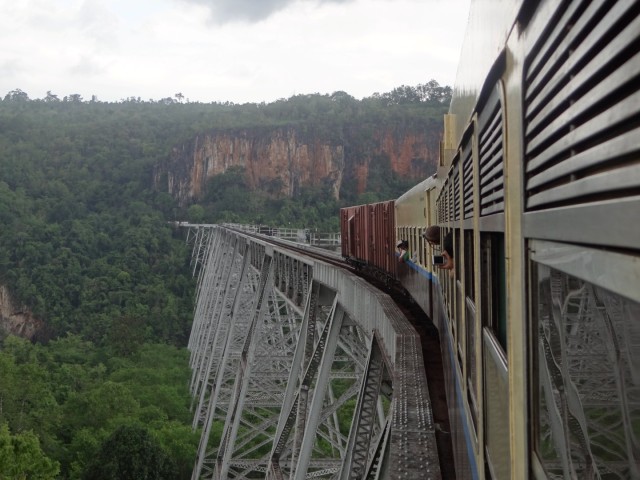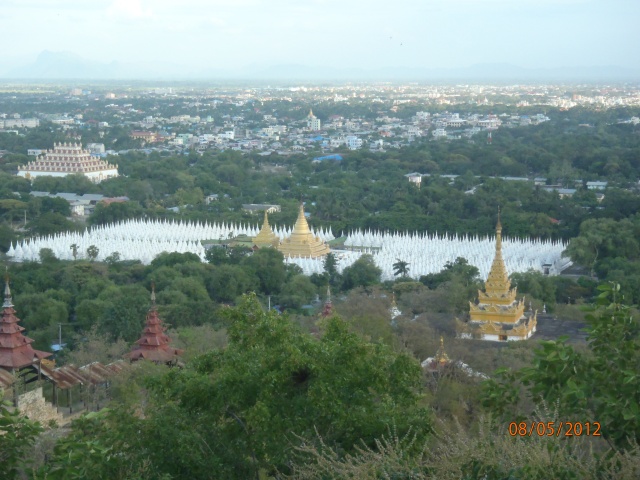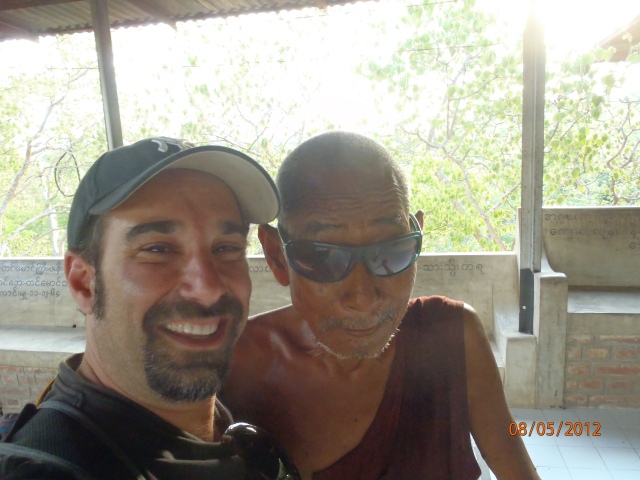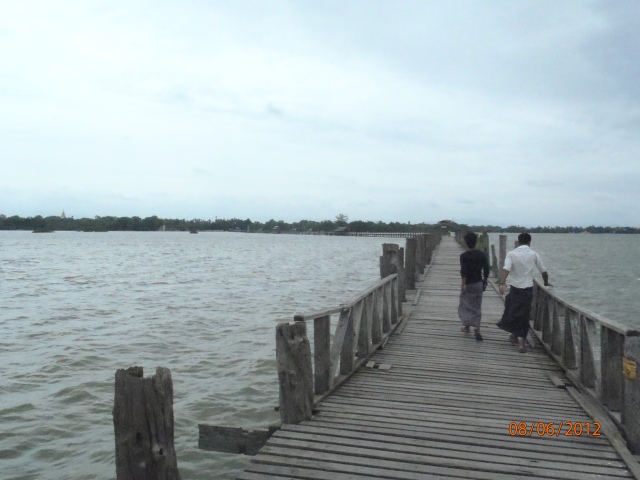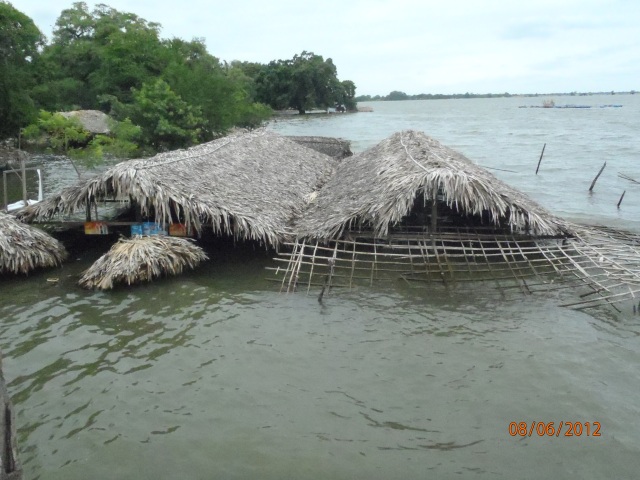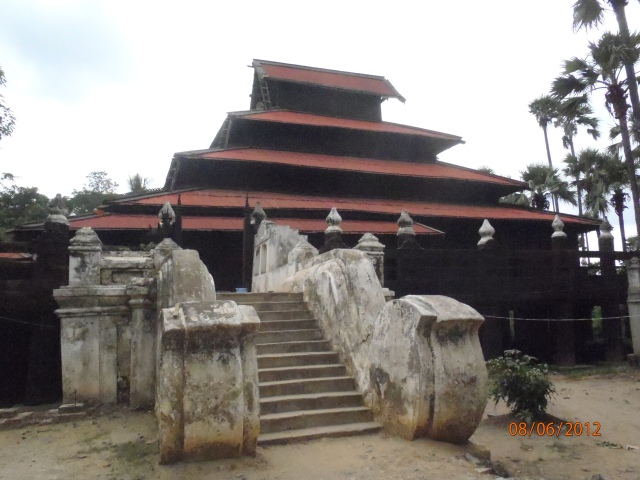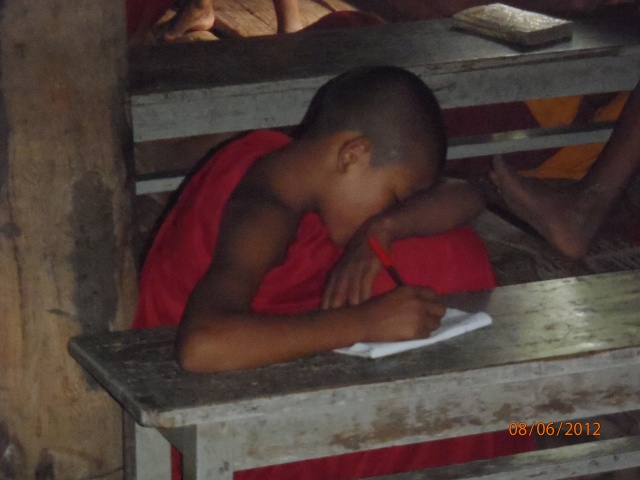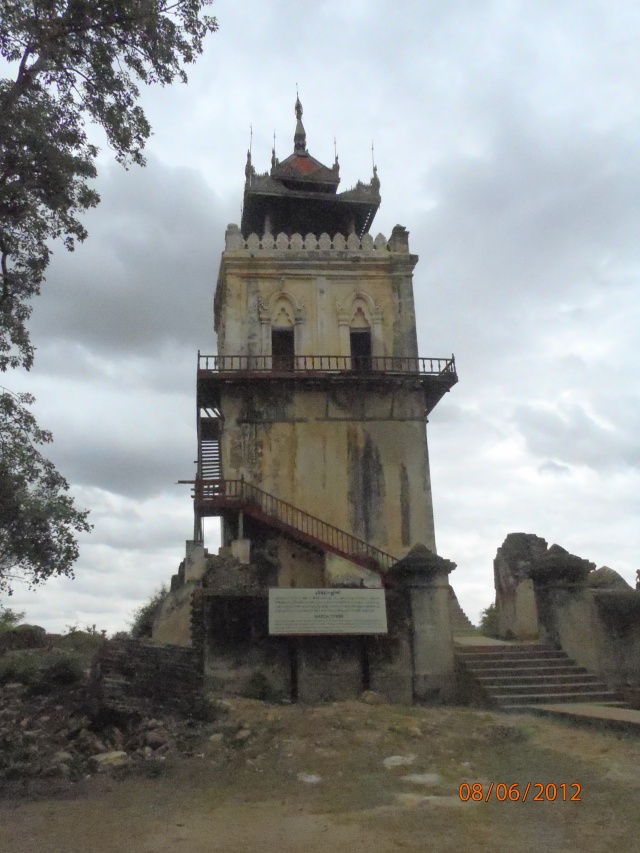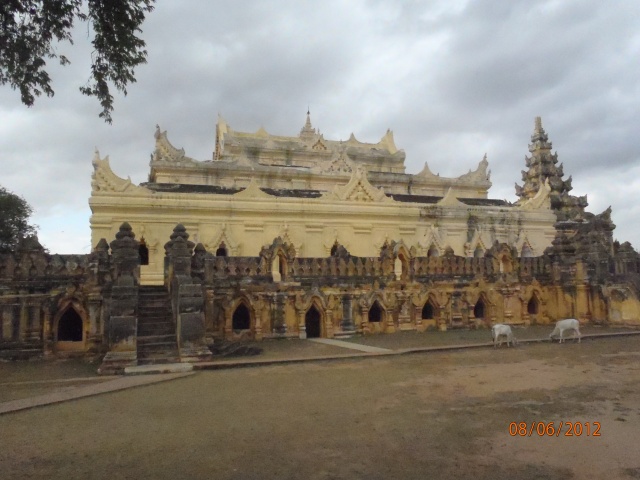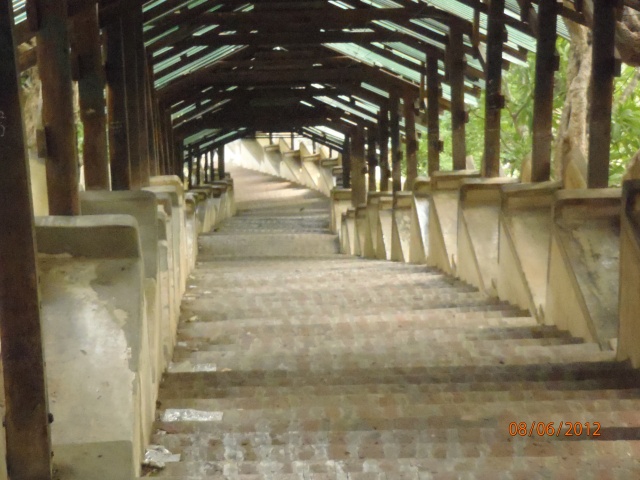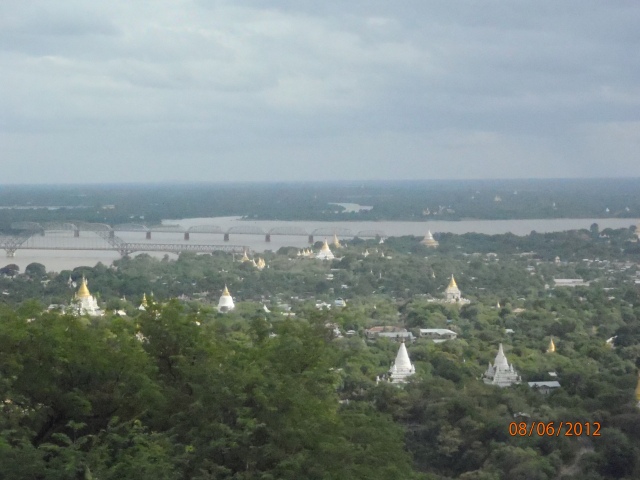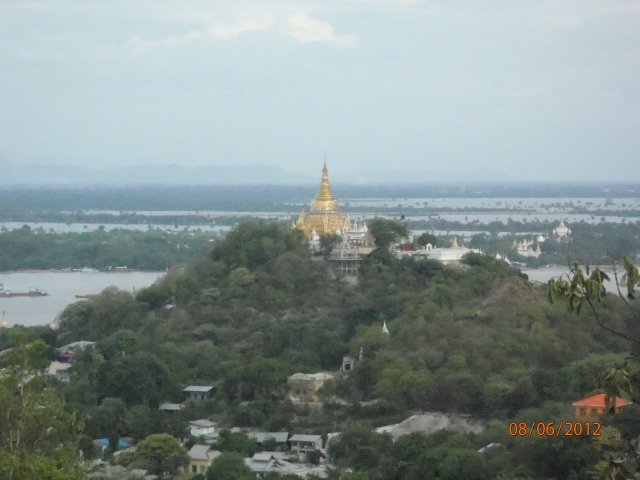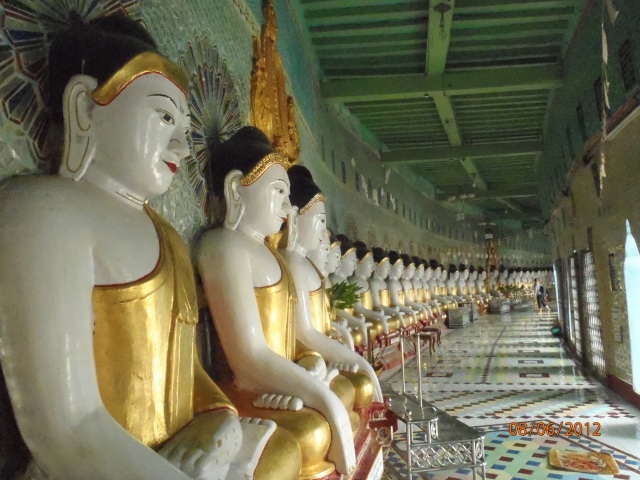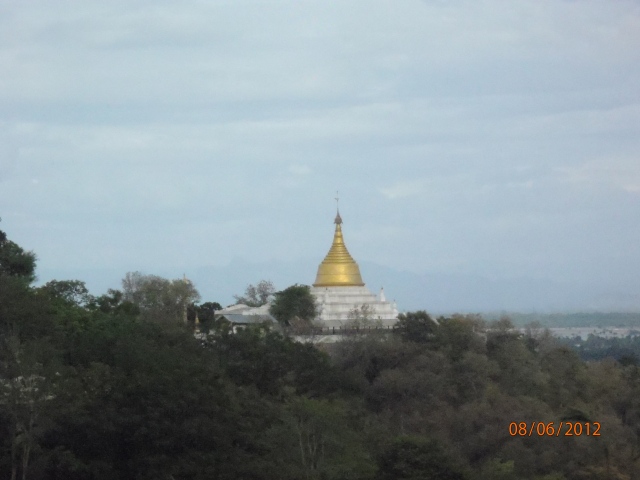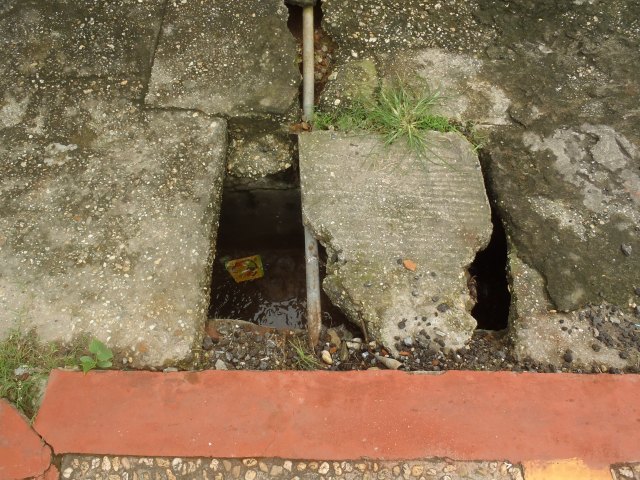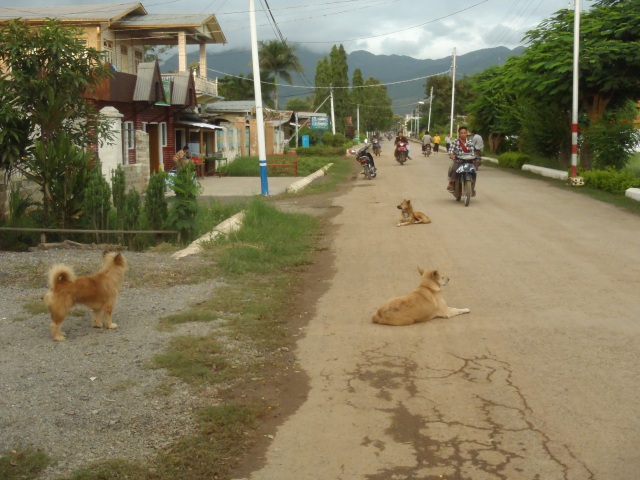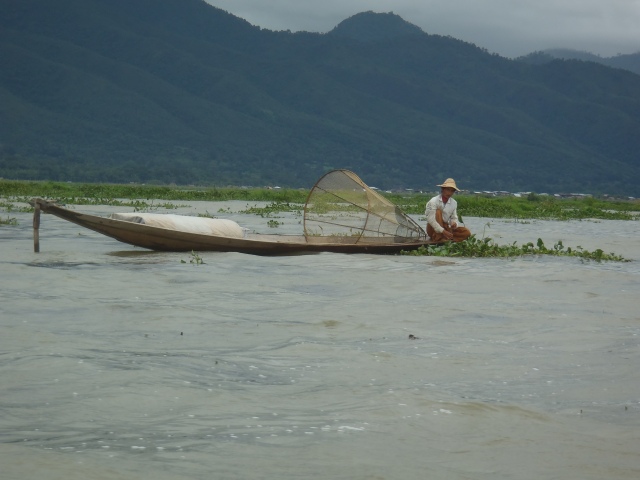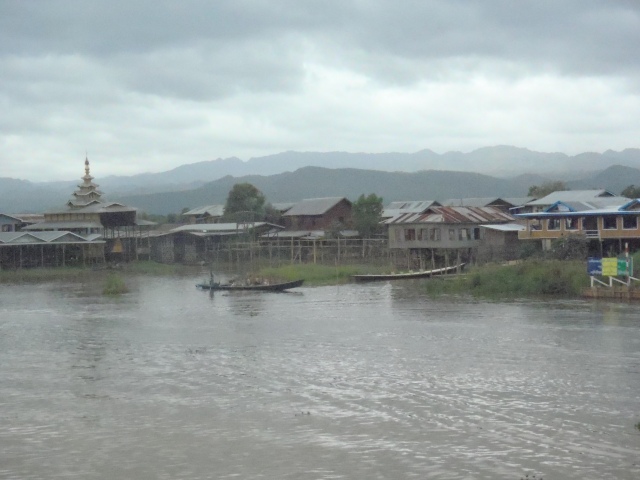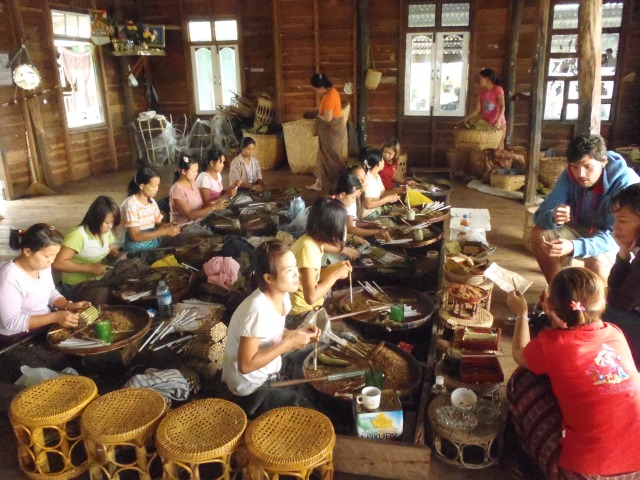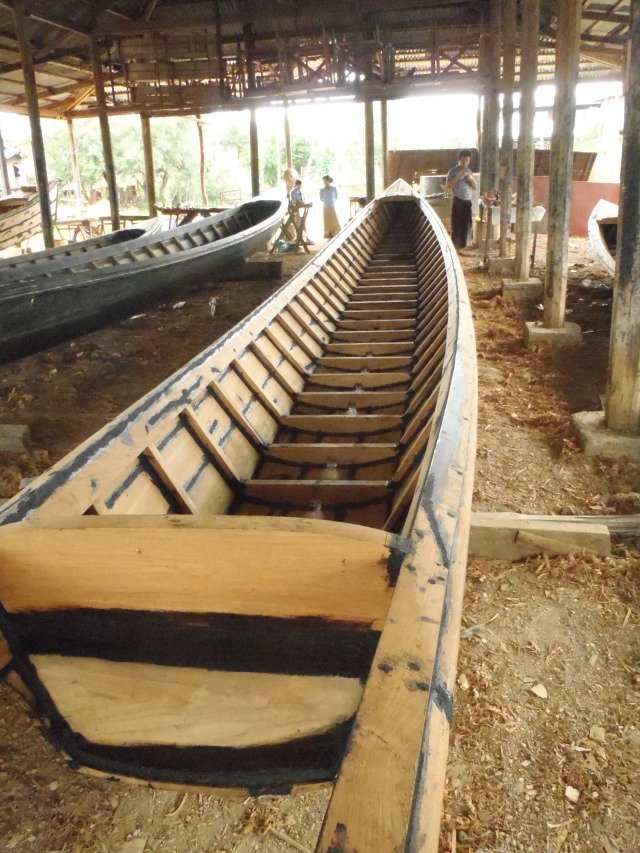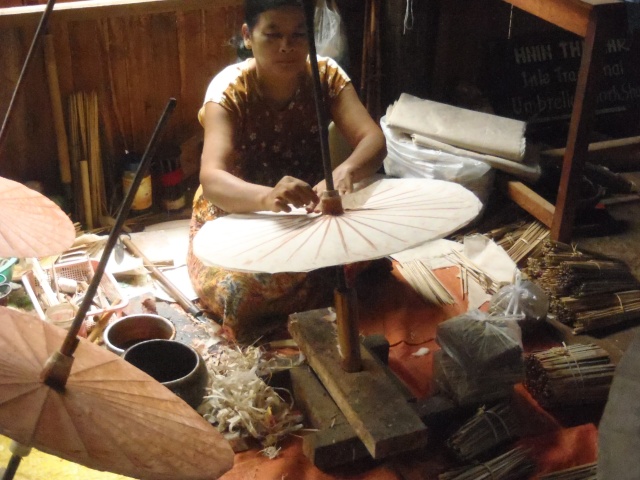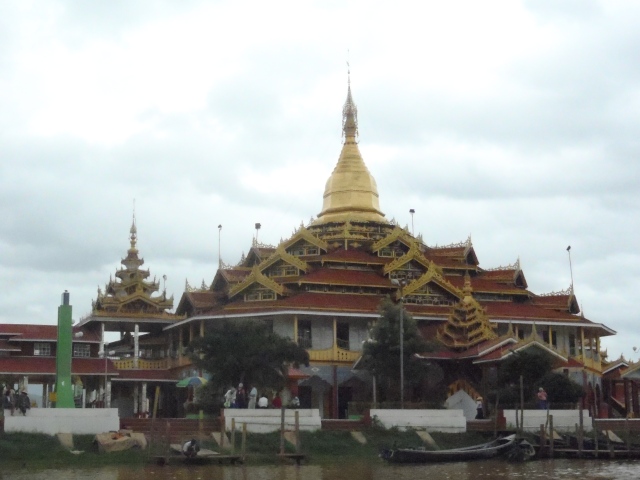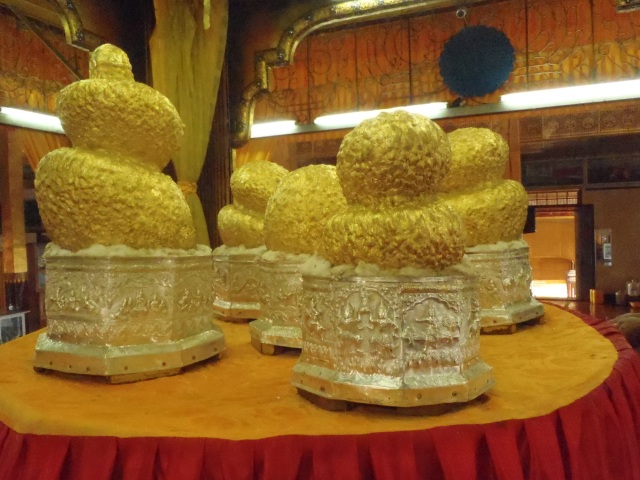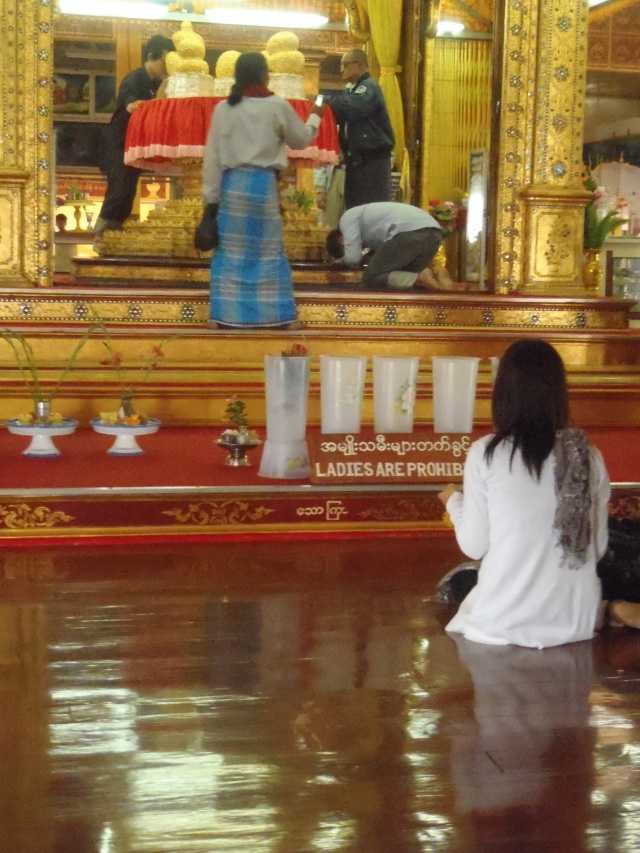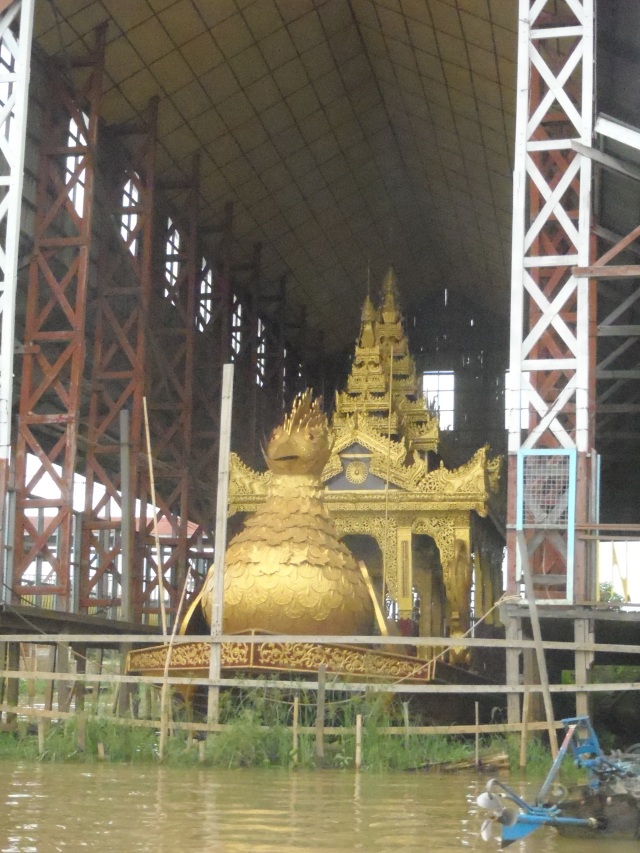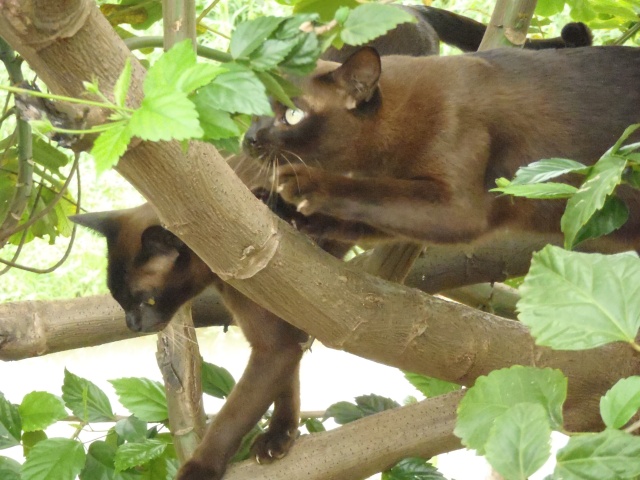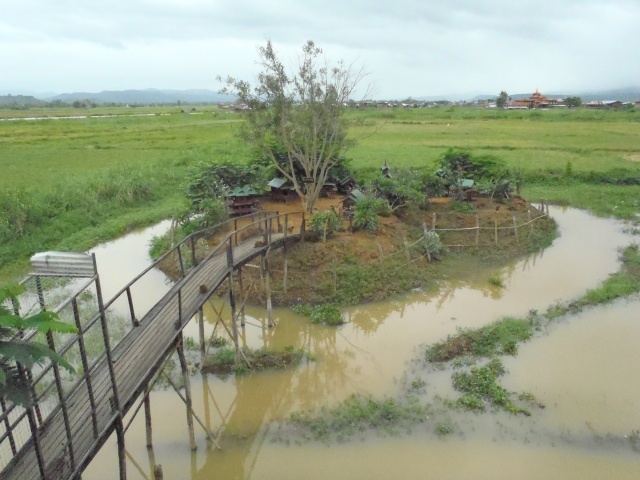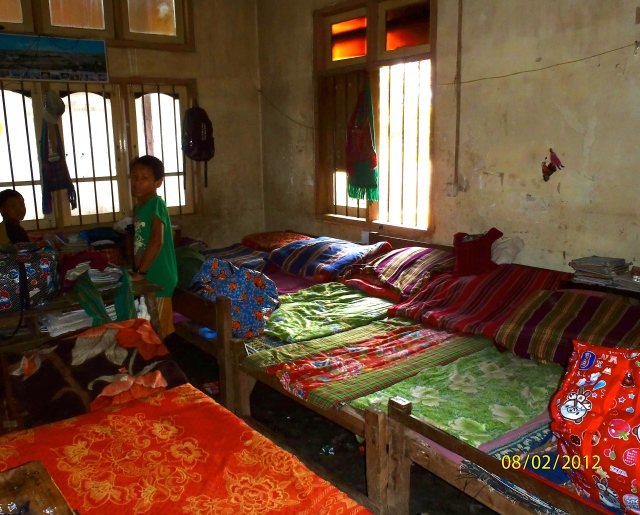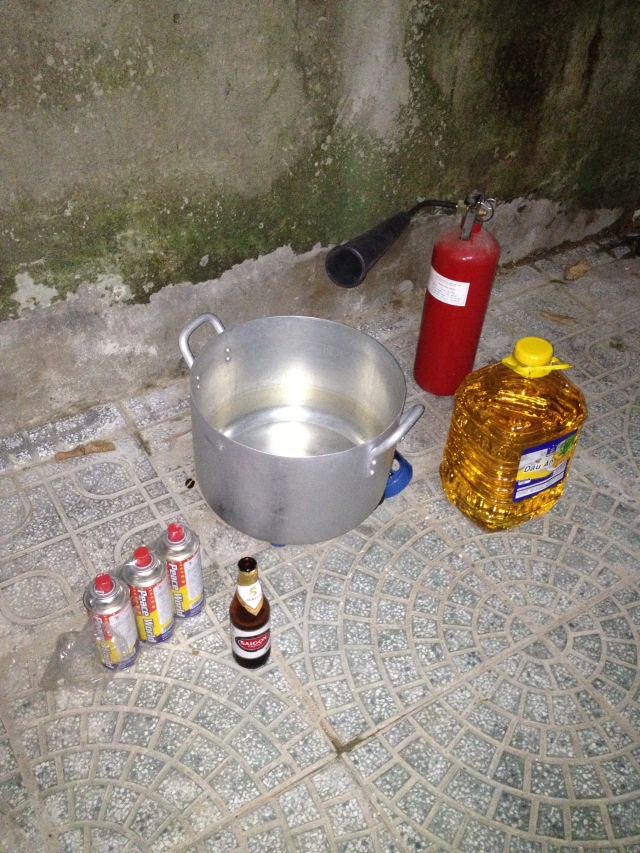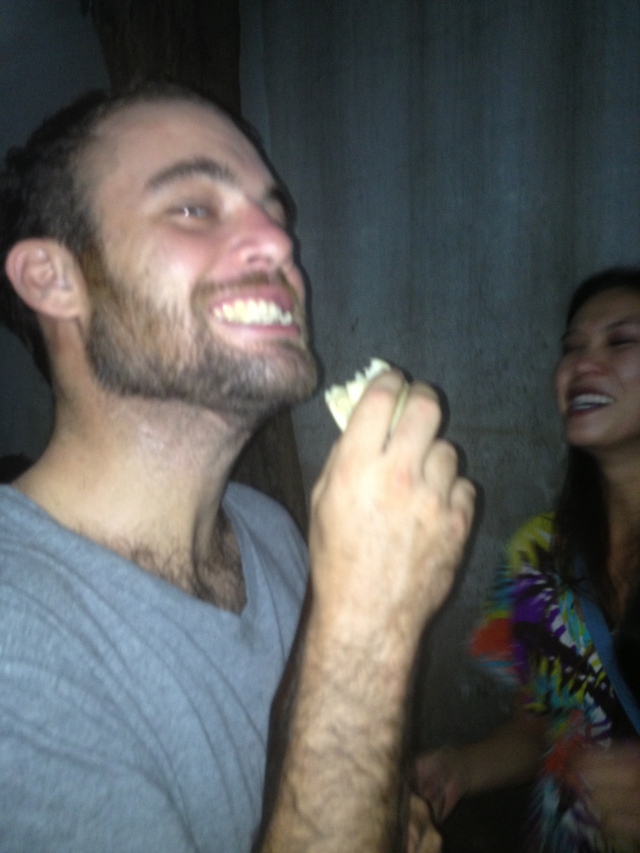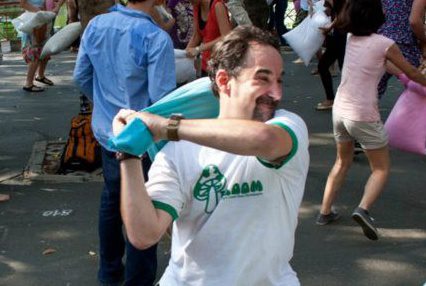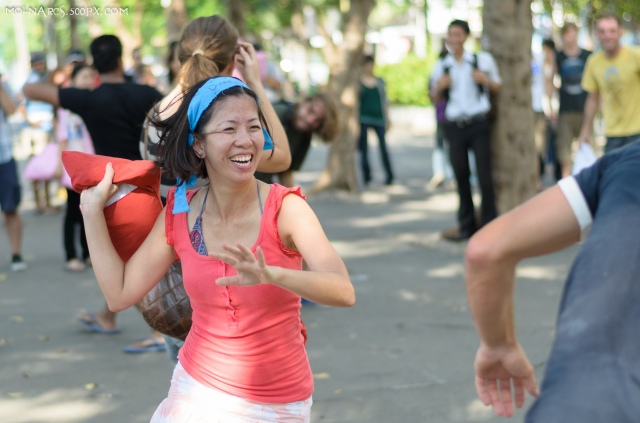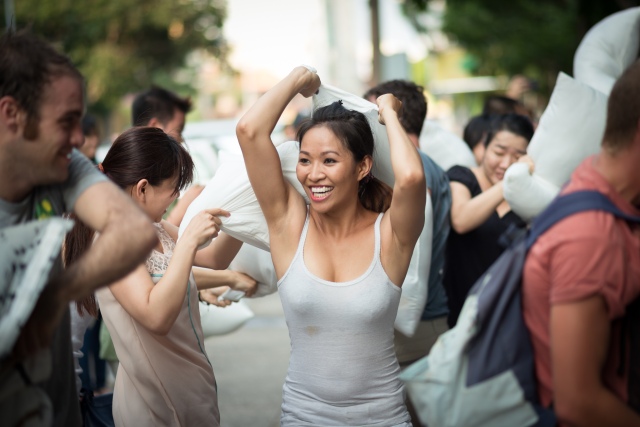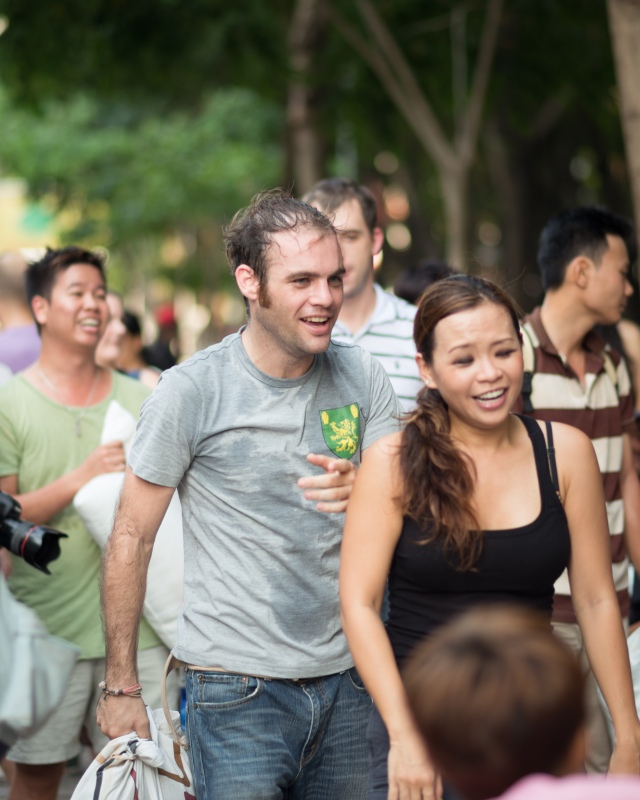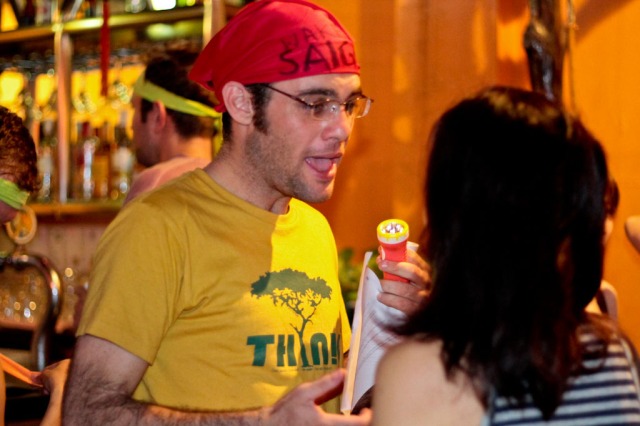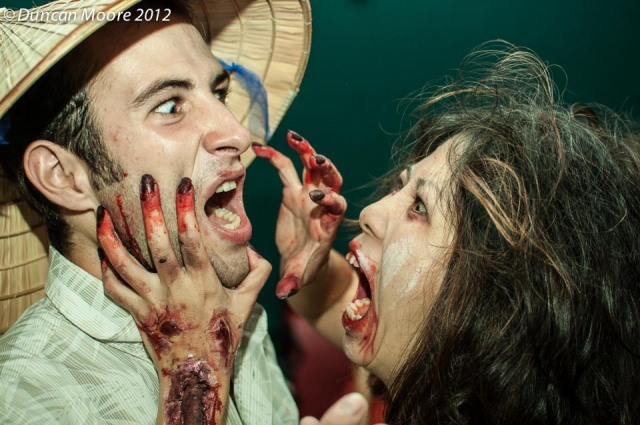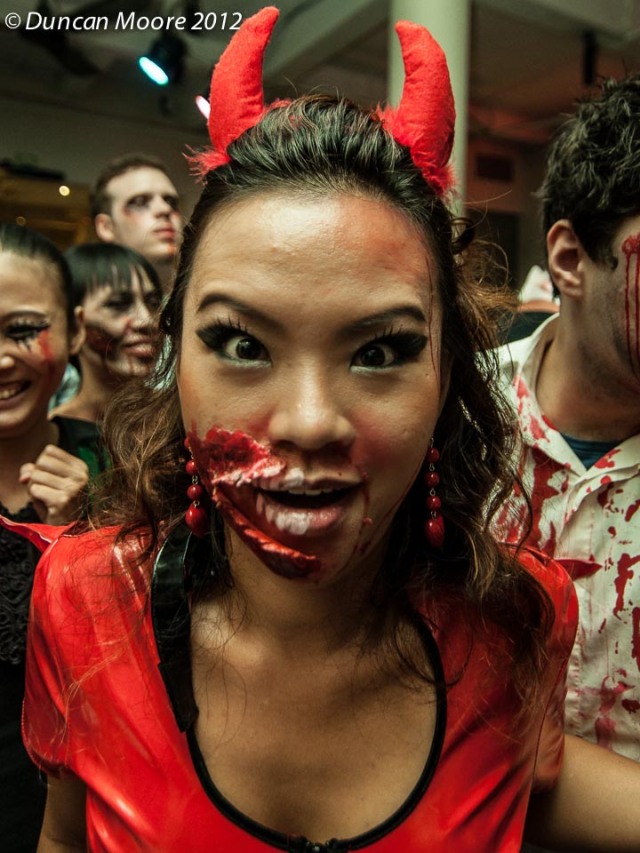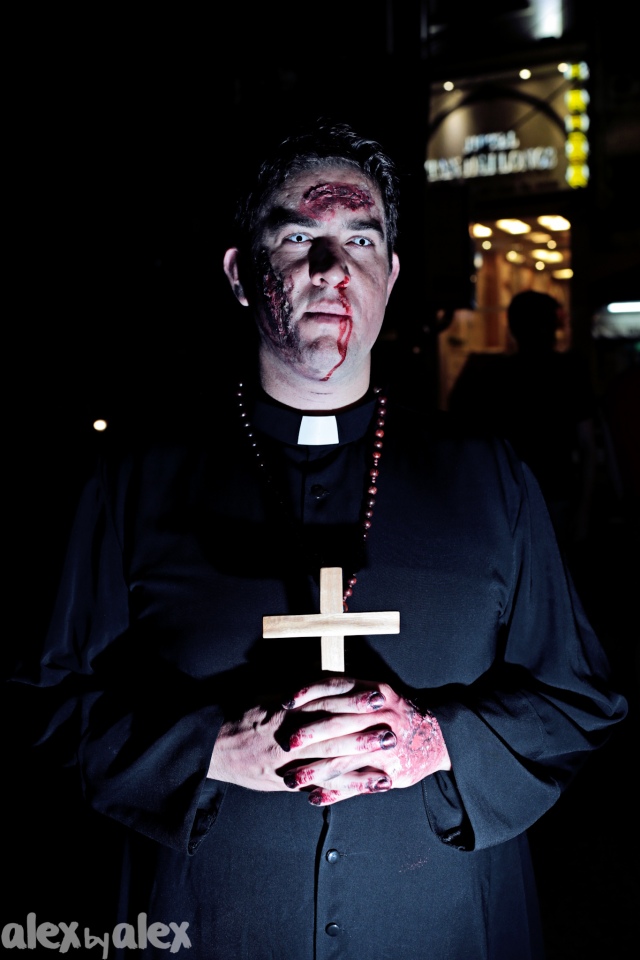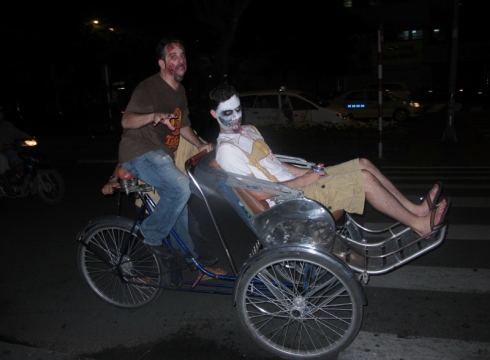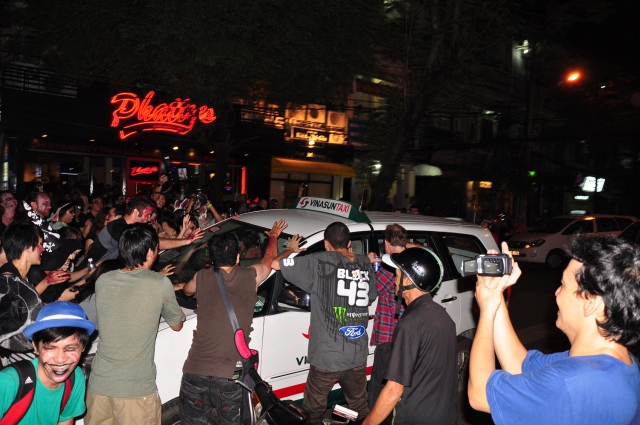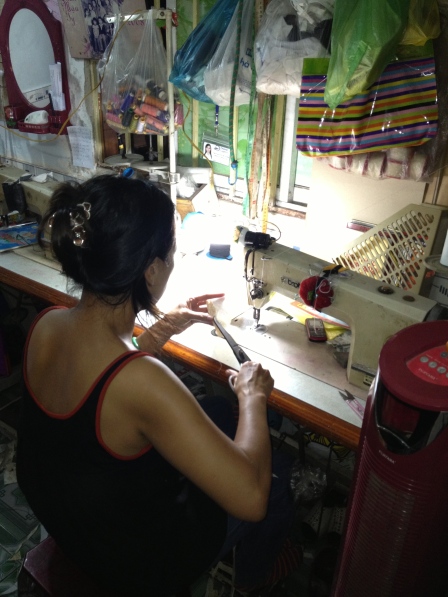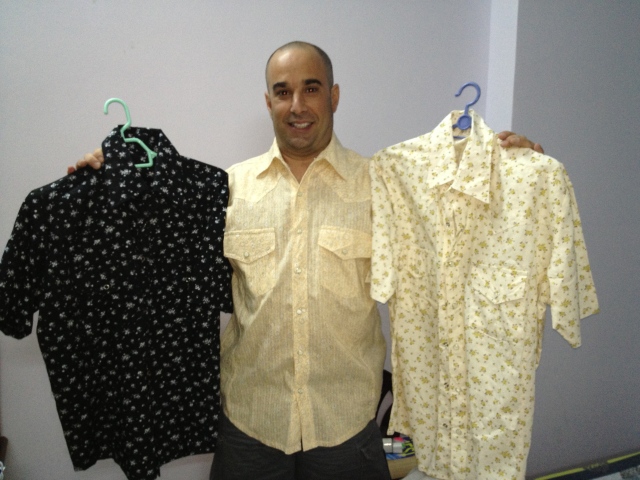This post is dedicated to all my friends back home who are in love with pho.
First, let’s all agree that pho is wonderful. It’s Vietnam’s culinary ambassador for a reason. That said, if that’s your experience with Vietnamese food, let alone the soups, you are doing yourself a disservice of Caremian proportions. I’m here to help. This will by no means be an exhaustive list. You could eat a different soup each day for a year and not have the same one twice. I’m just going to introduce you to some of the more popular ones here in the hopes you’ll seek them out back home and give ’em a whirl.
First up, banh canh. There are many varieties of this one, the type I go for is banh canh Trang Bang, named for the town of its origin. I just had a bowl for dinner tonight (and last night as well!). This is a relatively simple one. The broth is light and flavorful with hints of tartness. Chopped scallions decorate the slices of lean pork loin. Adding a dollop of chilies spices this one up just right! To be fair, you might have some difficulty finding this one in the US. Typically, the restaurants that serve this variation are also serving wraps made of a special type of rice paper that stays fresh for a short period of time. You’ll find it easier to get some banh canh gio heo.
Bo kho is Vietnamese beef stew. It’s served one of two ways: banh mi bo kho (with a baguette) or hu tiu bo kho (with noodles). Rich and spicy, this one serves chunks of beef with sliced onions, some herbs, scallions, and a warm baguette. It’s zesty, spicy, and will warm up your tongue!
One of my favorites is bun moc (pronounced: boon mawp). It has one of the best tasting broths you’ll sample. This is a rice vermicelli noodle soup that features what the Vietnamese call cha, or pork cakes, along with scallions, and roasted garlic. There are many types of cha prepared all different ways. Bun moc has a variety of them. The blocky white ones are the most common, and have a blander taste to them. The elongated ones tend are sweeter and more tender than the others. The white, round ones are mild and have mushrooms, while the brown ones, my personal favorites, have a cinnamon flavor to them! Lucky for me, Giang isn’t a fan of cha so whenever we go to our favorite bun moc place, Bun Moc Thanh Mai, I always wind up with her cha. It’s customary to use sate, which is a spicy chili sauce made with garlic, oil, and lemon grass; and mam tom, which is shrimp paste. Be careful with the mum tom, it’s very pungent!
Banh da cua Hai Phong is one you’ll definitely remember if you come across it. It’s a clear broth served with long, flat noodles, cha, ground crab meat, bo la lot (beef wrapped in betel leaves), and morning glories, a popular green vegetable here.
Banh canh cua is another one that is outstanding. Using large noodles, it’s served with crab meat, sliced pork, prawns, bits of pork rinds, scallions, and congealed blood (some people prefer not to eat this part, but I’ve come to love it!). Again, a little sate, some squeezed lime, perhaps some banh quay (Chinese-style fried bread).
Bun mam is another popular bowl and some people call it the Vietnamese version of gumbo. When you get your first bowl that fermented aroma wafts up your nose and your mouth starts to water. The vermicelli noodles, prawns, squid, pork, and eggplant all cry out for some sate and shredded banana leaves.
Bun Thai is similar to bun mam, but lacks the fermented smells and is usually quite a bit spicier.
Mi quang is a favorite of Giang’s. She loves it. There are too many varieties to list, but the one I have pictured is pork with flat noodles, rice crackers, chicken, and congealed blood.
Hu tieu is a go-to for me. There’s an excellent stall right along Tan Dinh market at night. There are several takes on hu tieu. Its origins may lie with the Chinese who settled in Cambodia, but Thailand and Vietnam both have version of it. The one I usually get is more Chinese-style than the hu tieu Nam Vang which is more traditionally Vietnamese. The xia xiu (pork), pork rinds, rice noodles, scallions, green leafy veggies, minced pork, and banh tom (shrimp cracker) all come together in a delicious broth. Yeah, I’ve had a few bowls of this.
Sticking with the Chinese influence, sui cao has become a favorite. Our friend Annie introduced us to this one. The best is in D5. It’s dumpling soup. You can choose what to add to it, I usually add xia xiu, but you can choose shrimp, chicken, pork skins, and a bunch of others I wouldn’t know about because I don’t read that far down the menu. When hungry, we order fried dumplings as well which come with a sweet and sour sauce. You can also order a side of the pork bones they use to make the broth. There’s still enough meat on there to enjoy. Yes, it’s as delicious as it sounds.
Last one of the Chinese-influenced soups is hoanh thanh (wonton). I love this one and was having it every day for quite a while. Sliced pork (xia xiu), green onions, leafy veggies, minced pork, pork-filled hoanh thanhs. You just can’t beat it for $1.50.
I’m going to finish up with bun rieu. This is another crab noodle soup that has a much different flavor than banh canh cua. Green onions, tofu, tomatoes, vermicelli noodles, congealed duck blood, morning glories, and ground crab in a tomato broth. I think it’s a bit stronger, but definitely worth checking out.
I could go on for days listing soups to try in Vietnamese cuisine. My hope is that my friends who love food and enjoy pho try some of the other fantastic soups from this country. Vietnam is definitely among the 5 best cuisines on the planet in my opinion, and I can make a strong case for top 3. So the next time you want some pho, remember that here, pho is closer to breakfast cereal. Sure, we all love it and don’t go too long without having a bowl, but if you don’t sample some of the other bowls of yummy goodness the Vietnamese have blessed us with, well, you’re really missing out.







